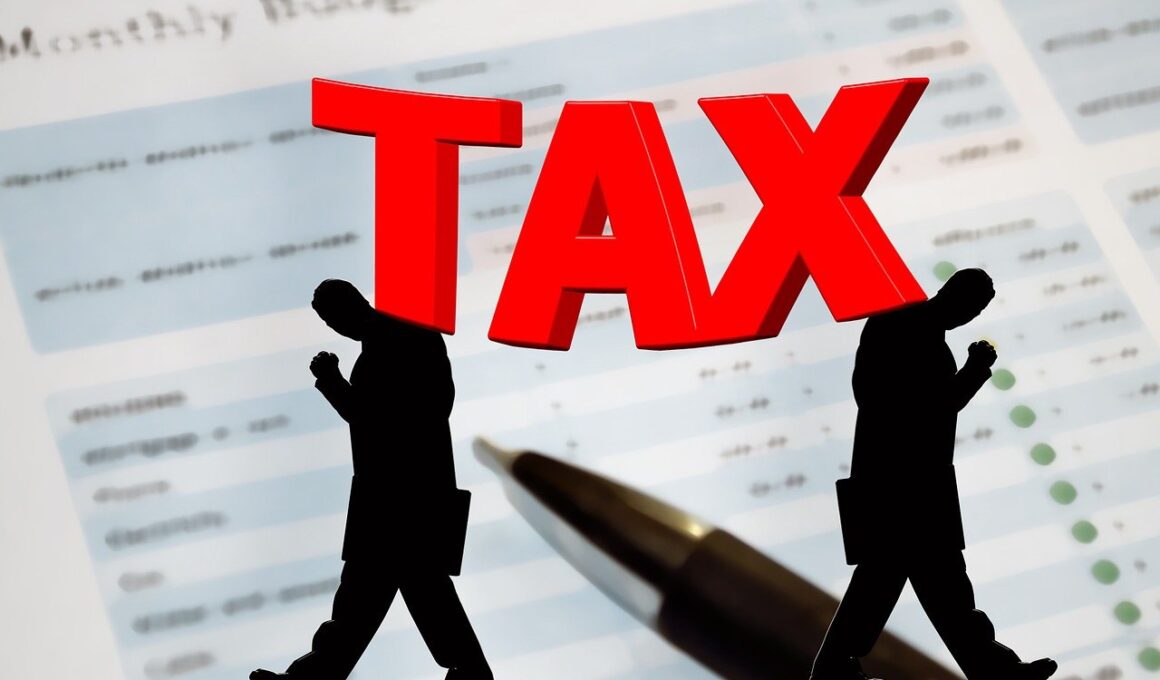How to Read and Understand Your Tax Statement
Understanding your tax statement can feel overwhelming, but breaking it down into components can help clarify the process. First, familiarize yourself with the various sections typically found on your tax statement, including personal information, income details, and deductions. Evaluating each part systematically allows for a better grasp of your tax responsibilities. Pay attention to numeric values and financial terminology to navigate your statement effectively. The personal information section usually includes your name, address, and Social Security number, making it essential to review for accuracy. Once you’ve checked your information, move on to the income section, usually showcasing your total earnings for the fiscal year. Understanding how your income segments into different categories, such as wages, dividends, and interests, provides insight into how you’re taxed. Next, analyze any applicable deductions that might reduce your taxable income. Familiarizing yourself with common deductions can help you optimize your tax situation. Educational expenses, mortgage interest, and charity contributions often feature here. Engaging with your tax statement each year will develop this critical financial literacy over time.
The next vital aspect to comprehend is the tax brackets and rates applicable to your income level. Tax brackets determine the percentage of tax owed based on income ranges. Familiarizing yourself with the current tax brackets can optimize your tax strategy. Tax rates differ, depending on your filing status: individual, married filing separately, married filing jointly, or head of household. Each bracket increases progressively, which means that only the income within a specific range is taxed at that specific rate. For instance, a lower rate applies to the first dollar earned, while a higher rate is applicable to income that exceeds that bracket. It’s crucial to remember that just because you fall into a higher bracket doesn’t mean all your income is taxed at that higher rate. To find up-to-date tax brackets, you can consult the IRS website or a financial expert. Understanding where you fit within these brackets can aid in estimating your tax liabilities. This understanding can lead to informed decisions throughout the year about withholding and payments.
Identifying Tax Credits
Another essential element of your tax statement is the identification and application of tax credits. Tax credits can reduce your overall tax bill and can come in two main forms: refundable and non-refundable. Refundable credits can lead to a refund even if you owe no taxes, while non-refundable credits only reduce the tax owed to zero but do not result in a refund. Examples of credits include the Earned Income Tax Credit (EITC), Child Tax Credit, and education credits. Due diligence on available credits based on your eligibility can yield significant tax savings. Carefully analyze the guidelines for each credit to determine applicability based on your financial situation. Various online resources can guide you in understanding which credits you might qualify for and how to claim them effectively. Additionally, certain credits may phase out as income increases; hence, stay informed about current limits. Proper application of credits could greatly reduce your tax liability, ultimately improving your financial standing.
Evaluating your filing options is important when preparing your tax return. You may choose to file independently or seek professional assistance from a tax preparer or accountant. Each option has its advantages and disadvantages depending on your unique financial circumstances. Filing independently can save you money but may require time and a willingness to research tax laws. It also grants you a deeper understanding of your financial situation over time. Professional services offer expertise but can come with hefty fees; thus, it is vital to assess whether the cost outweighs the benefits. Consider leveraging available online tax preparation software which may bridge the gap with guided help at a lower cost. Ensure to gather all necessary documentation before sitting down to file, including W-2 forms, 1099s, deductions, and relevant receipts. Proper organization is key to an efficient and stress-free filing process. Ultimately, the decision should reflect your comfort level and your specific tax needs. As you establish your routine, you will become more adept at managing your filing experience.
Common Mistakes to Avoid
As you navigate through your tax statement, be aware of common pitfalls that could lead to errors or audits. Failing to report all income or misunderstanding tax deductions are frequent mistakes individuals make. Lastly, neglecting to sign your tax return is a crucial step that some taxpayers overlook, resulting in processing delays. To minimize errors, always double-check your calculations and ensure accurate reporting. Furthermore, verify that your personal information aligns with Social Security records to avoid issues. Keeping records and documentation is vital for future reference or potential audits. Organizing all relevant tax-related documents, such as previous returns, receipts, and correspondence, simplifies the process when it’s time to file again. In addition, setting reminders to file by the tax deadline can prevent unnecessary penalties. Engaging with tax preparation forums can also enhance your understanding and clarify any uncertainties regarding the filing process. Networking with others can provide insights into common challenges and solutions. Maintaining a proactive approach will ultimately foster a better experience in managing your taxes.
After filing your taxes, understanding the timeline and expectations for refunds or payments is critical. The IRS usually processes refunds within about 21 days if you file electronically and choose the direct deposit option. However, be prepared for possible delays, especially during peak tax season. Monitor the status of your refund through the IRS’s “Where’s My Refund?” tool, which offers real-time updates. Should you have a tax liability instead of a refund, be mindful of the due date for any payments owed. Make arrangements to pay on time to avoid accruing interest or penalties. Research payment options available to you if you need assistance in meeting these obligations. The IRS offers various programs aimed at aiding taxpayers, including installment agreements in certain cases. Understanding these options can alleviate the financial burden, enabling you to manage your taxes responsibly. Moreover, keeping track of any correspondence received from the IRS is essential for maintaining awareness of your tax situation. Establishing an organized filing system can also help ease potential future communications with tax authorities.
Long-Term Tax Planning Strategies
Tax planning isn’t just about filing correctly but incorporates broader strategic approaches to manage liabilities in the long run. It’s essential to consider tax-efficient savings and investment strategies. Utilizing tax-advantaged accounts such as 401(k)s or IRAs can significantly impact your overall taxable income year over year. Research the ins and outs of these accounts, particularly regarding contribution limits and tax implications upon withdrawal. Additionally, coordinating charitable donations and understanding capital gains can help mitigate tax burdens. Reinforcing a habit of reviewing your finances periodically will aid in recognizing opportunities for savings. Working with a financial advisor is also advised if you anticipate substantial charitable giving or investing. They can guide you in making decisions that align with both your objectives and tax efficiency. Developing an ongoing relationship with a tax professional or financial planner can provide clarity on complicated situations. Keep abreast of tax law changes annually since tax planning changes based on legislative adjustments. Proactively adapting these strategies will foster a sense of financial security as you navigate through your financial life.
In summary, understanding your tax statement is integral to managing your financial responsibility effectively. Familiarizing yourself with various components helps demystify the filing process, allowing for a productive experience. Grasping the implications of tax brackets and rates can refine your financial strategies and optimize your liabilities. A thorough examination of tax credits, coupled with proper knowledge of filing options, can uncover potential savings. Avoiding common mistakes along with a well-informed approach will facilitate your engagement with the IRS. Post-filing strategies encompassing payment timelines and insights into long-term planning can enhance your outlook on taxes. Establishing a foundation of knowledge equips you for future financial endeavors. Continue exploring tools and resources available to ensure your tax strategy aligns with your financial goals. This ongoing education fosters confidence, leading to informed decisions and financial well-being. Your investment in understanding these elements will prove immensely valuable in your effort to maintain strong fiscal health.


